MSI P6N-SLI Platinum Nforce 650 SLI is the first Nforce 650 SLI board we had in our hands. MSI continues the trend to make all solid capacitors (Conductive Polymer Aluminium Solid Capacitors) boards introduced by Gigabyte about eight months ago.
This is good for the customer because it increases the lifespan and stability of any motherboard even in harsh conditions, such as hot summer days. The bad thing is, it increases manufacture cost, by about $5-$7. Due the increased usage, there is a possibility that the price premium compared to conventional motherboards will decrease in the near future.
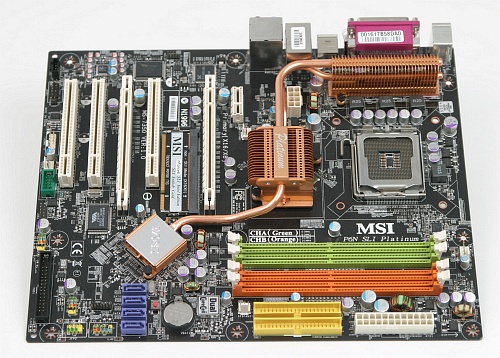
MSI P6N-SLI Platinum Nforce 650 SLI
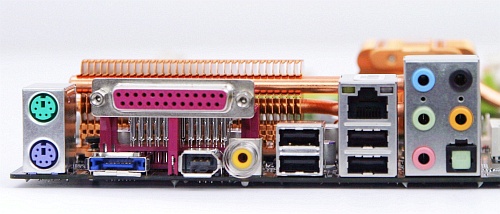
The rear panel includes two PS2 ports, parallel port, eSATA, Firewire, SP/DIF, four USB 2.0 ports and a RJ45-Jack for LAN. There is also an audio part with 5.1 analogue outs and optical out.
The power-voltage-regulator is a standard 4-phase analogue part, which is required by Intel-specs but many companies avoid to use them because of cost. This is nothing fancy like 5-phase digital or 6-, 8- or even 12-phase we've seen so far. If this construction will be enough for good overclocking scores remains to be seen, but I would recommend 5-phase digital or at least 6-phases for anyone interesting in overclocking, because it should provide better stability and prolonged lifespan for the board. At the same time it is reducing the strain of the phases which should also reduce heat.
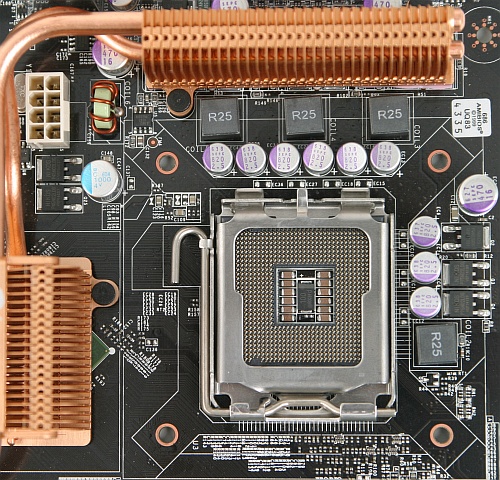
Only three of the four phases are covered by the Heatpipe-Cooling system, introduced by ABIT a long time ago and most common on boards for the enthusiast and technophile markets.
The 24-pin power-plug is positioned on the outer edge on the right side of the board and guarantees easy accessibility but sadly the 8-pin EPS-plug is positioned most incontinently in the middle of the board, too close to the heat pipe, for my taste. It will hinder airflow for most cooling solutions except top-blower CPU-coolers. You should first install the cooler and then plug-in the 8-pin power to avoid troubles while assembling your computer.
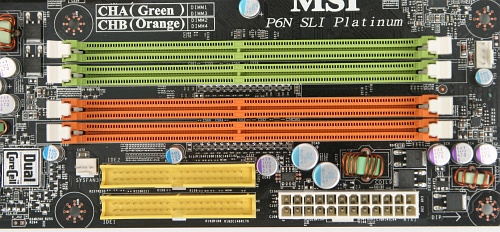
The black PCB and the muted colours are pleasant for the eyes, but the colour-scheme of the memory sockets may confuse the average Intel motherboard users. The same colour means that you are using a single channel not dual-channel. For a dual-channel setup you must place one stick in each colour.
The sockets have enough space to the first PCIe x16 slot, so upgrading your memory can be done without removing your graphic-card. Right of the green memory sockets you'll find the CPU-fan-header, which is a quite uncommon position, but also very convenient when you have to change your fan.
Beneath the memory sockets you will find two IDE ports, a dying race but helpful when you have a lot of „old“ IDE-hard discs and/or optical drives in you old computer, so this board maybe a good choice when you plan to upgrade in the near future.
A network capability is provided by the Realtek RTL8211BL PHY and the VIA VT6308P gives you two firewire port, but you need to use the firewire-bracket for the second one.
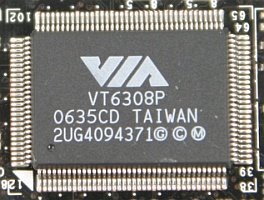
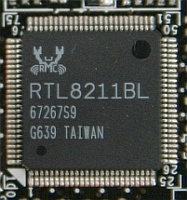
The SATA-Ports are oddly numbered starting with the 4th port on the bottom. If you are planning to use a SLI configuration the first and second SATA-port may interfere with the bigger Geforce Cards such as 8800 GTS or 8800 GTX. Of course you can boot from any SATA port so the numbering doesn't matter at all. MSI doesn't provide SATA-cables with fixing mechanism, so it may be possible the cables get loose during installation of a new graphic card or during transportation.
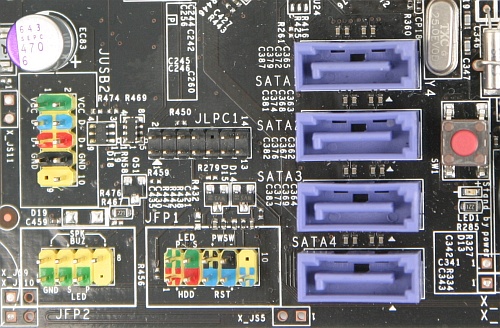
Besides the 2nd SATA-port you'll find the CMOS-reset switch, a neat feature when you messed up your BIOS during overclocking. I can't understand why MSI didn't find time to add a power-on switch as well, as you can see, it won't take much space.
The panel-connectors are colour-coded and labelled. This is really helpful in case you misplaced your manual it will spare you much trouble while assembling your computer.
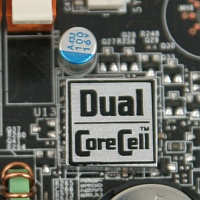
For auto-overclocking up to 10% MSI features its Dual-CoreCell chip. This is not that useful for the hardcore overclocker, but nice to have for users who don't understand the BIOS.
All Nforce 650i boards need a SLI-switch-card to provide the SLI-function, without it the second PCIe x16 is not usable at all, as stated at the MSI-homepage. We will test this to confirm.
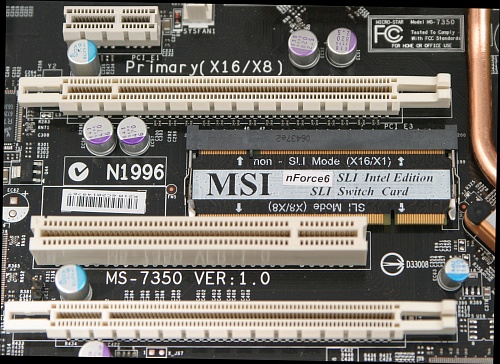
You will also loose one PCI slot when using dual-slot graphic cards in SLI-configuration, but if you don't need them, you get three PCI slots which is quite uncommon nowadays.
The accessories are satisfying except the cables, which are the cheapest I have seen for a long time and normally packed only with low-cost boards. The "Platinum" brand shouldn't feature them.
The board features:
nVidia nForce 650i SLI SPP/nVidia nForce 430 MCP
4-phase VRM
VIA VT6308P Firewire controller
Realtec ALC888
Realtec RTL8211BL network phy
Fintek F71882FG Super I/O and VRM-controller
Heatpipe-Cooling System for MCPs and three phases of VRM
2Gb BIOS, version 1.00 when purchased, meantime 1.10 is available
Slots:
1x PCIe x16 or 2x PCIe x8 in SLI Mode, the second PCIe x16 slot is not usable for other cards.
1x PCIe x1
3x PCI
Memory:
2x Dual-Channel DDR2-slots for PC2-4300U/PC2-5400U/PC2-6400U memory up to 8GB
Storage:
4-Port SATA II features RAID 0/1/0+1/5/JBOD
1-Port Sil3531 eSATA II
2-Port IDE features UDMA 133/100/600
Backpanel Ports:
1x PS/2 keyboard
1x PS/2 mouse
1x parallel port
1x Gb LAN
1x Firewire
1x eSATA
4x USB 2.0
7.1 Audio analog
1x optical SP/DIF output
1x coaxial SP/DIF output
Accessories:
1x Bracket 1-port Firewire
1x D-Bracket 2 with 2x USB 2.0 and 4 diagnostic LEDs
1x SLI-Bridge for nVidia SLI-capable graphic cards
4x SATA cable
1x eSATA to SATA cable
2x HDD-power to PCIe-power cable
1x Floppy cable
1x IDE HDD cable
1x 4cm fan for SPP heatsink
BIOS-features:
Bus Speeds: Auto, 400 to 2500 (100~625) in 1MHz increments
Memory Ratios: Auto, Sync
Memory Speed: 400MHz~1400MHz in various increments
PCIe Speeds: 100MHz~200MHz in 1MHz Increments
Core Voltage: Auto, +0.125V to +0.3875V in 0.0125V increments
FSB Options: Auto, Linked, Manual
CPU Clock Multiplier: Auto
Core 2 Duo: 6x-11x in 1X increments - Core 2 Duo, downwards unlocked
Core 2 Extreme: 6x-16X, downwards unlocked
DRAM Voltage: Auto, 1.80V to 2.80 in 0.05V increments
DRAM Timing Control: Auto, Manual
NB Voltage: 1.25V to 1.50V in .05V increments
SB Voltage: 1.50V, 1.60V, 1.65V, 1.70V
FSB VTT Voltage: 0% to 20% Increase, various increments
The instalation went without any glitches, stay tuned for the scores in part 2.


